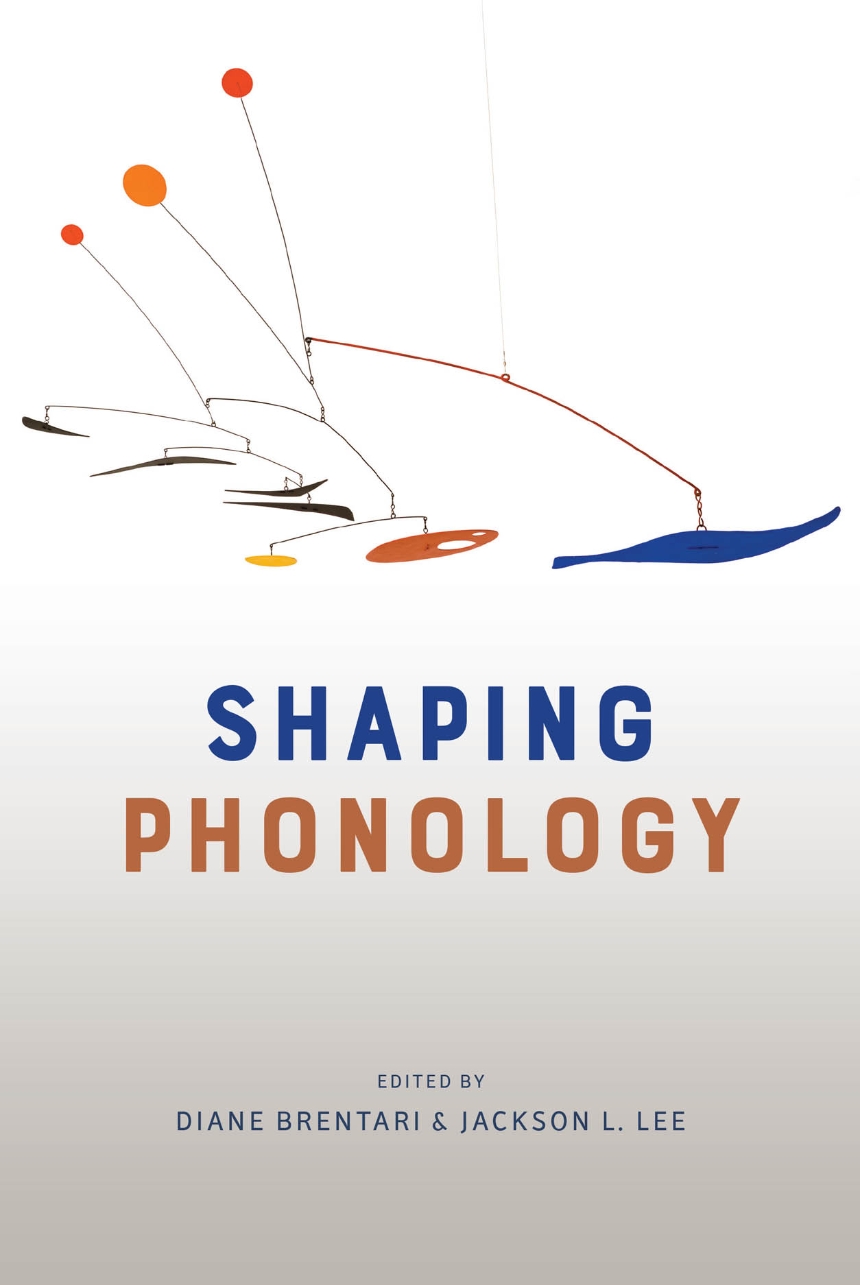Shaping Phonology
Within the past forty years, the field of phonology—a branch of linguistics that explores both the sound structures of spoken language and the analogous phonemes of sign language, as well as how these features of language are used to convey meaning—has undergone several important shifts in theory that are now part of standard practice. Drawing together contributors from a diverse array of subfields within the discipline, and honoring the pioneering work of linguist John Goldsmith, this book reflects on these shifting dynamics and their implications for future phonological work.
Divided into two parts, Shaping Phonology first explores the elaboration of abstract domains (or units of analysis) that fall under the purview of phonology. These chapters reveal the increasing multidimensionality of phonological representation through such analytical approaches as autosegmental phonology and feature geometry. The second part looks at how the advent of machine learning and computational technologies has allowed for the analysis of larger and larger phonological data sets, prompting a shift from using key examples to demonstrate that a particular generalization is universal to striving for statistical generalizations across large corpora of relevant data. Now fundamental components of the phonologist’s tool kit, these two shifts have inspired a rethinking of just what it means to do linguistics.
Divided into two parts, Shaping Phonology first explores the elaboration of abstract domains (or units of analysis) that fall under the purview of phonology. These chapters reveal the increasing multidimensionality of phonological representation through such analytical approaches as autosegmental phonology and feature geometry. The second part looks at how the advent of machine learning and computational technologies has allowed for the analysis of larger and larger phonological data sets, prompting a shift from using key examples to demonstrate that a particular generalization is universal to striving for statistical generalizations across large corpora of relevant data. Now fundamental components of the phonologist’s tool kit, these two shifts have inspired a rethinking of just what it means to do linguistics.
320 pages | 11 halftones, 26 line drawings, 6 tables | 6 x 9 | © 2018
Language and Linguistics: Phonology and Phonetics
Reviews
Table of Contents
Preface
Part One Autosegmental Phonology
A. History
1 The Secret History of Prosodic and Autosegmental Phonology
John Coleman
2 A Brief History of Autosegmental Phonology with Special Reference to Its Founder
William R. Leben
B. Applications to Tone
3 The Autosegmental Approach to Tone in Lusoga
Larry M. Hyman
4 Tonal Melodies in the Logoori Verb
David Odden
C. Extensions of the Theory
5 Autosegments Are Not Just Features
D. Robert Ladd
6 The Importance of Autosegmental Representations for Sign Language Phonology
Diane Brentari
7 Abstract Underlying Representations in Prosodic Structure
Bert Vaux and Bridget D. Samuels
8 Sonority Waves in Syllabification
Caroline Wiltshire
9 Toward Progress in Theories of Language Sound Structure
Mark Liberman
Part Two Computation and Unsupervised Learning
10 On the Discovery Procedure
Jackson L. Lee
11 Model Selection and Phonological Argumentation
James Kirby and Morgan Sonderegger
12 The Dynamics of Prominence Profiles: From Local Computation to Global Patterns
Khalil Iskarous and Louis Goldstein
13 French Liaison in the Light of Corpus Phonology: From Lexical Information to Patterns of Usage Variation
Bernard Laks, Basilio Calderone, and Chiara Celata
14 A Phonological Approach to the Unsupervised Learning of Root-and-Pattern Morphology
Aris Xanthos
Contributors
Part One Autosegmental Phonology
A. History
1 The Secret History of Prosodic and Autosegmental Phonology
John Coleman
2 A Brief History of Autosegmental Phonology with Special Reference to Its Founder
William R. Leben
B. Applications to Tone
3 The Autosegmental Approach to Tone in Lusoga
Larry M. Hyman
4 Tonal Melodies in the Logoori Verb
David Odden
C. Extensions of the Theory
5 Autosegments Are Not Just Features
D. Robert Ladd
6 The Importance of Autosegmental Representations for Sign Language Phonology
Diane Brentari
7 Abstract Underlying Representations in Prosodic Structure
Bert Vaux and Bridget D. Samuels
8 Sonority Waves in Syllabification
Caroline Wiltshire
9 Toward Progress in Theories of Language Sound Structure
Mark Liberman
Part Two Computation and Unsupervised Learning
10 On the Discovery Procedure
Jackson L. Lee
11 Model Selection and Phonological Argumentation
James Kirby and Morgan Sonderegger
12 The Dynamics of Prominence Profiles: From Local Computation to Global Patterns
Khalil Iskarous and Louis Goldstein
13 French Liaison in the Light of Corpus Phonology: From Lexical Information to Patterns of Usage Variation
Bernard Laks, Basilio Calderone, and Chiara Celata
14 A Phonological Approach to the Unsupervised Learning of Root-and-Pattern Morphology
Aris Xanthos
Contributors
